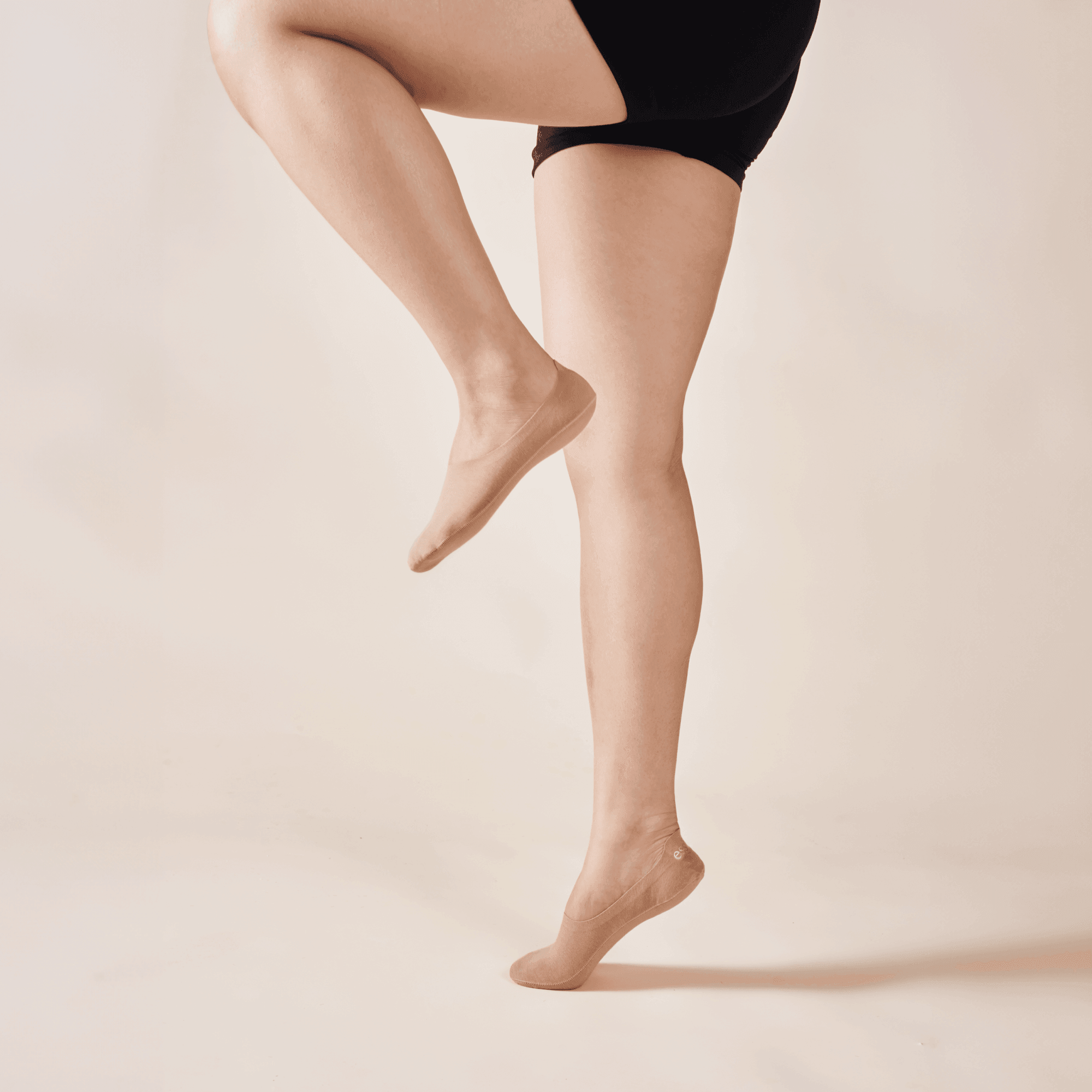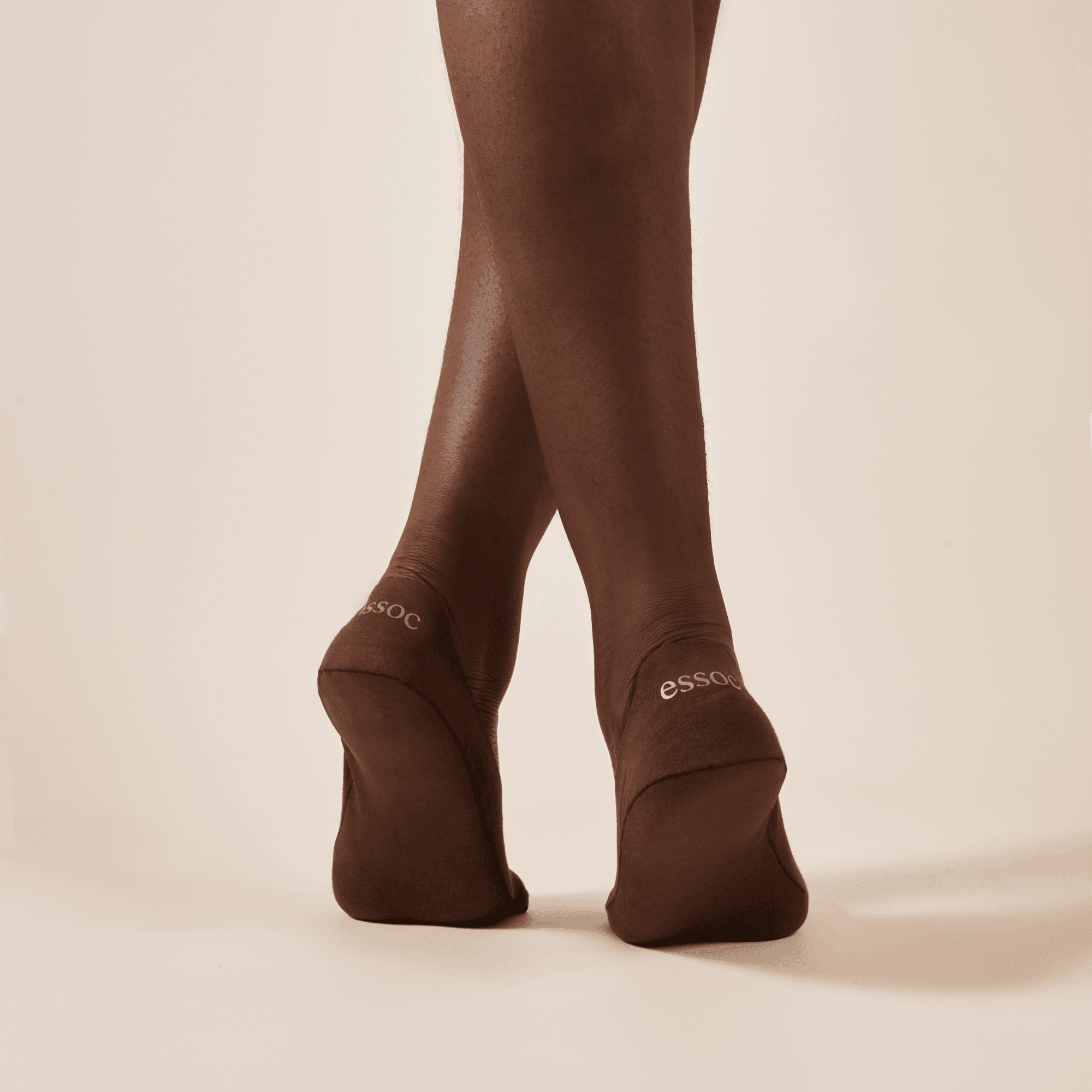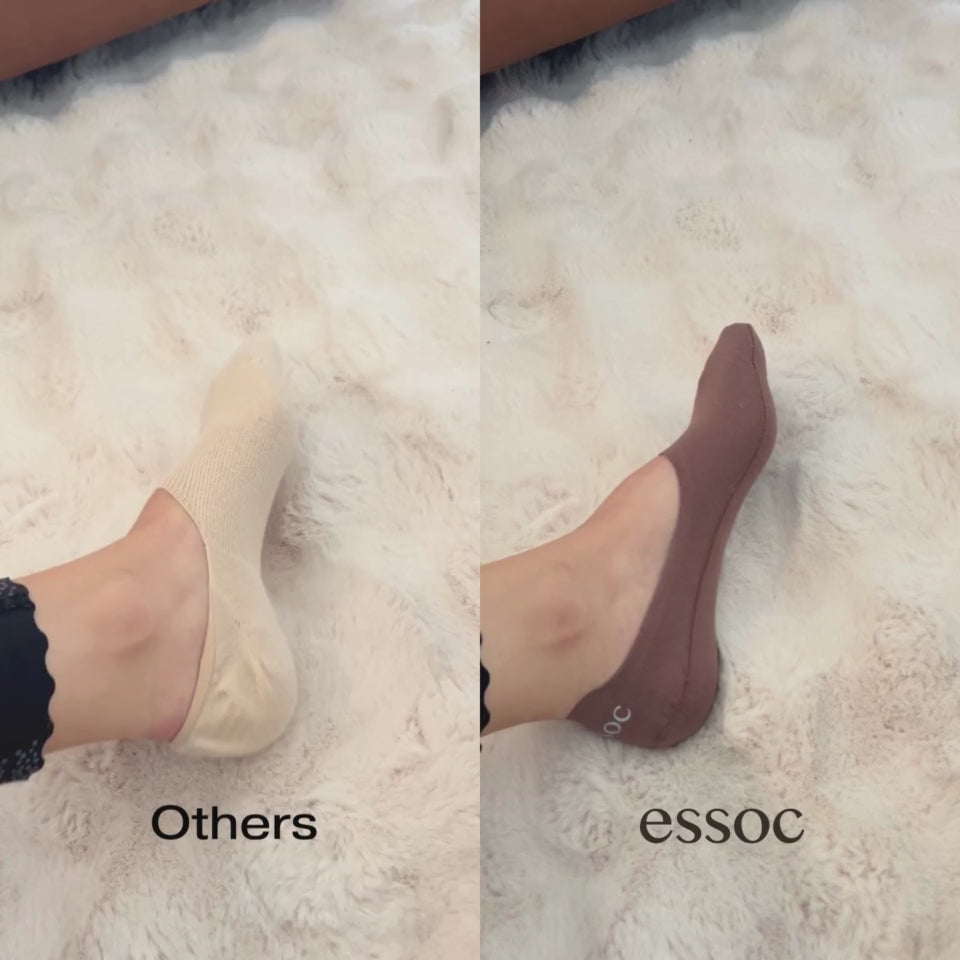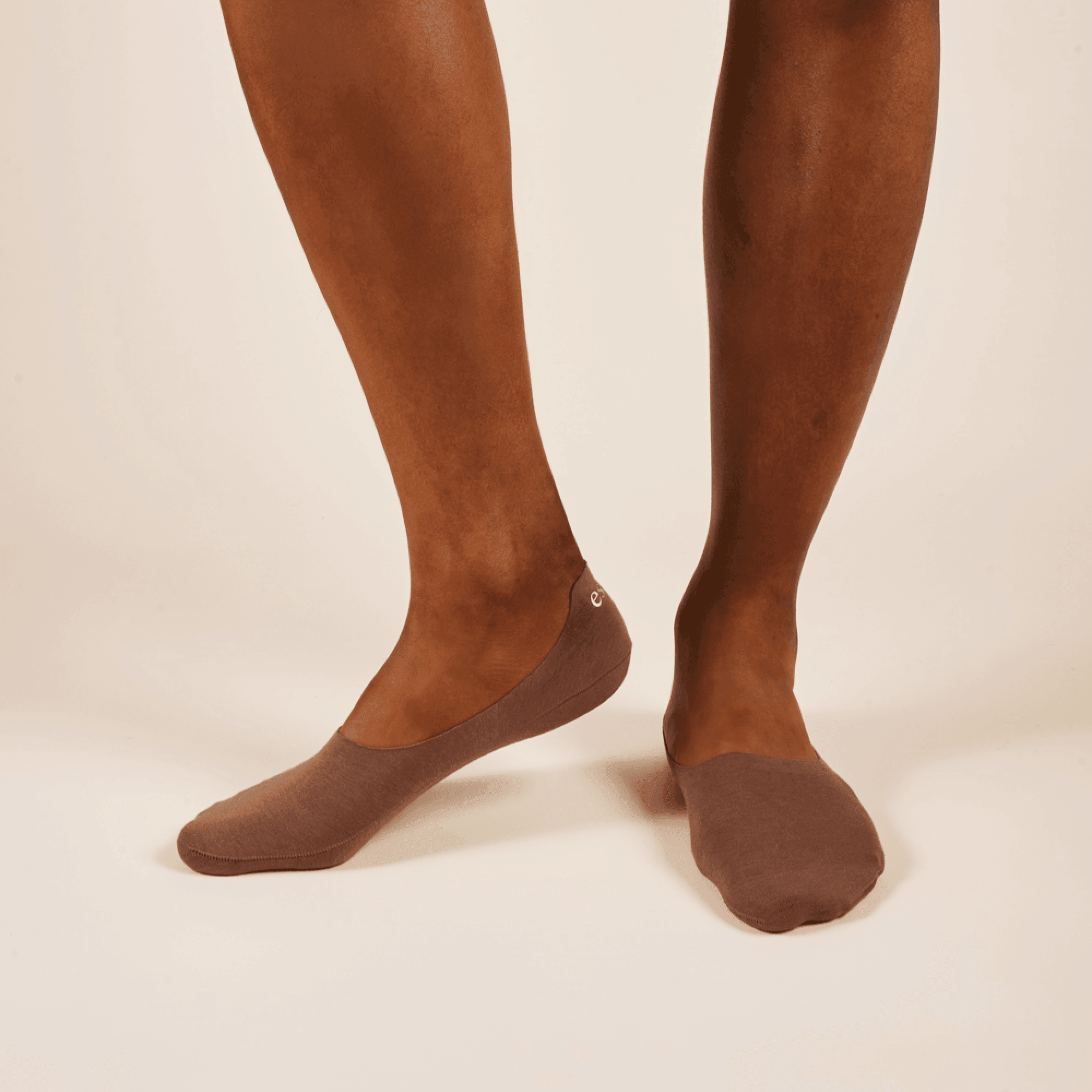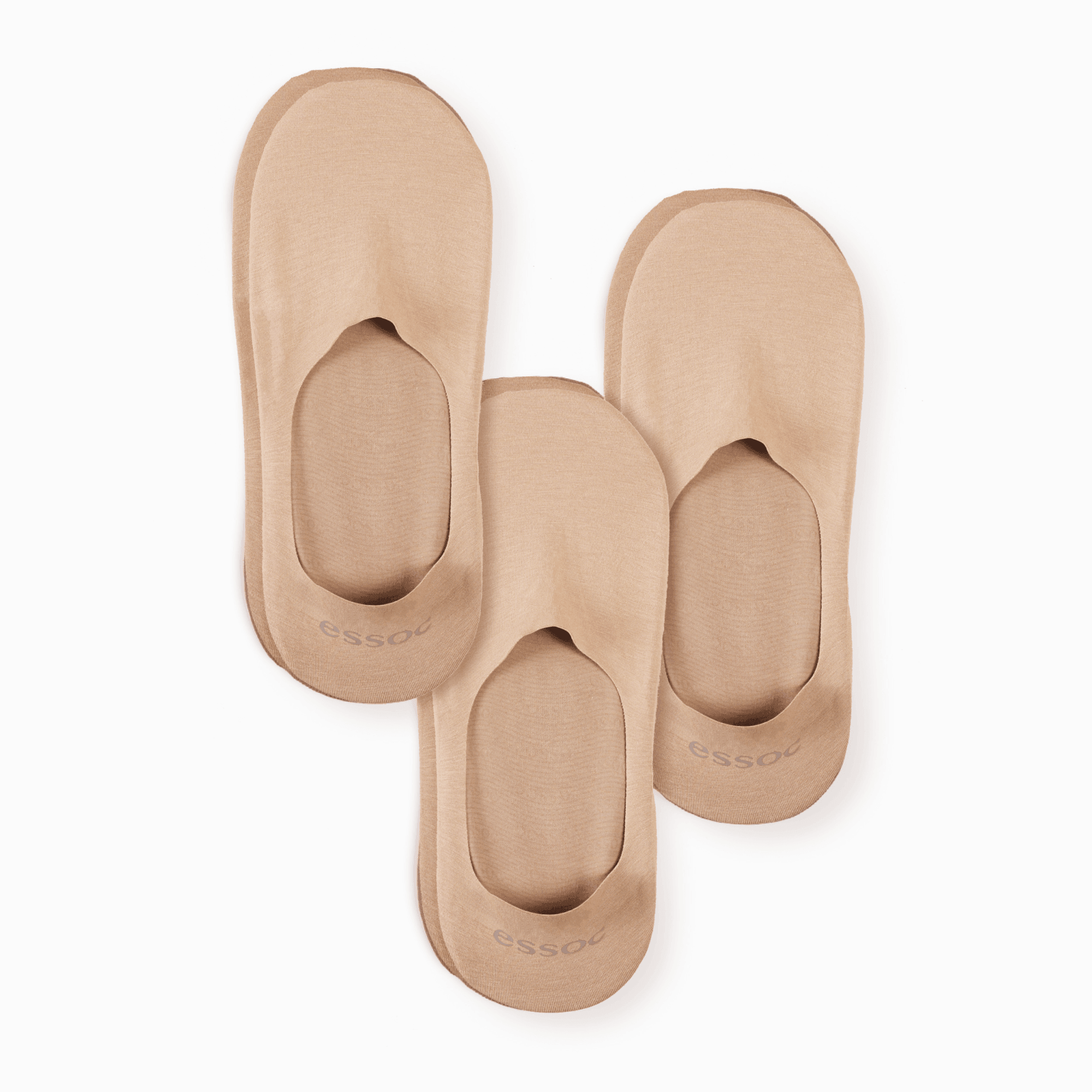Anti-slip socks for sports are more than just ordinary socks; they enhance stability and performance. With specialized grip patterns, they prevent slipping on basketball courts, yoga mats, and gym floors. Providing comfort and support, these socks help athletes move freely and confidently. Keep reading to discover how they work and why they are a game-changer!
Key Takeaways
- Anti-slip socks improve your grip and stability during sports activities.
- They help prevent injuries and blisters by keeping your feet secure.
- Available for various sports, these socks are designed for comfort and performance.
What Are Anti-Slip Socks?
Anti-slip socks are a small thing that makes a big difference. You don't think about traction—until you slip. That moment when your foot skids just a little, and suddenly, you're on the floor. These socks change that.
They work by adding grip. Tiny silicone patterns—like Essoc's hypoallergenic silicone grip strips—cling to smooth surfaces, keeping your feet secure whether you're on hardwood floors, tile, or inside your shoes. Hardwood floors, tile, even the inside of your shoes.
Some brands place grips at high-friction zones: the arch, the ball of the foot, and the heel. Others go for an even spread. Either way, they cut down on sliding. That means fewer falls, better balance, and more control over movement.
People use them for different reasons. Athletes need stability in fast sports like basketball or soccer. Dancers use them for floor work. Seniors and hospital patients wear them to prevent falls. Even kids—who run on anything—benefit from the extra grip. They're not just socks. They're safety gear.
The Benefits of Anti-Slip Socks
Improved Stability
Feet slip. That's just physics. Inside a shoe, there's friction, but not always enough. Anti-slip socks change that. With added grip, they lock feet in place. The result? More control, whether sprinting down a soccer field or cutting left on the basketball court.
Athletes depend on precision. A misstep, even slight, costs points, games, maybe seasons. Studies show that slippage inside shoes reduces reaction time by milliseconds—just enough to lose an edge. These socks fight that.
Here's what they do:
- Keep heels from sliding inside shoes, improving stability.
- Reduce micro-movements that waste energy and slow reaction times.
- Help maintain balance in fast-paced sports like basketball, football, and tennis.
For casual wearers, stability means fewer stumbles, better footing on slick floors, and more confidence moving around. It’s not just for athletes. It’s for anyone who wants to stay planted.
Injury Prevention
Sprains happen in a split second. A twist here, a slip there. Anti-slip socks cut that risk. By anchoring feet inside shoes, they prevent sudden movements that lead to rolled ankles or strained ligaments.
Blisters? Another common issue. Friction causes skin to rub raw, especially during high-impact activities. These socks reduce that. How? Less foot movement inside the shoe means less irritation. Some even use moisture-wicking materials to keep feet dry (sweat makes friction worse).
Key benefits include:
- Reduced risk of ankle rolls and foot twists.
- Less friction, leading to fewer blisters.
- Better shock absorption, helping ease joint stress.
Whether for athletes, dancers, or just people on their feet all day, anti-slip socks offer real protection. Small change, big difference.
No one likes sore feet. Slipping, rubbing, pressure points—all make a long day feel longer. Good socks change that.
Materials matter
Premium anti-slip socks like Essoc blend cotton, modal, and spandex for the perfect balance of breathability, softness, and stretch—keeping your feet comfortable through every movement. Some go further, incorporating compression zones that improve circulation. Moisture-wicking? A must. Dry feet stay comfortable longer, and breathable fabric prevents overheating.
How they help:
- Grip patterns reduce pressure points and hotspots.
- Snug fit eliminates annoying shoe adjustments.
- Cushioning softens impact, making long walks easier.
For those who stand or move all day—nurses, warehouse workers, travelers—these socks aren’t just a luxury. They’re a game-changer.
Choosing the Right Anti-Slip Socks
Credits: Future Goalkeeping
Material Composition
Feet sweat. That’s just a fact. And when they do, the wrong fabric traps moisture, making socks clingy, hot, and just plain uncomfortable. That’s why breathable fabrics matter.
- Cotton works. It absorbs moisture, keeps things soft. But, too much cotton? That means soggy socks.
- Synthetic fibers (like polyester or nylon) wick sweat away, drying faster. Less stink, more comfort.
- Spandex helps. Just a bit—maybe 5% to 10%—adds stretch, keeps socks snug.
Some brands mix these materials in different ways. Look for blends that balance breathability and durability. A good sock doesn’t just sit on the foot; it works with it. No slipping, no overheating, no swampy mess.
Grip Style
Grip placement matters. Bad grips feel awkward, uneven. Good grips feel natural, like they’re just part of the sock.
- Silicone dots? Popular, effective, but some feel too sticky.
- Full-sole grip? Great for yoga, less great for everyday wear.
- Tread patterns? Offer traction without bulk, better for movement.
Not all grips are created equal. Some hold up after dozens of washes, others peel after two. Test them—rub fingers over the surface, check flexibility. Grips should move with your foot, not fight against it.
Fit
Too tight? Cuts circulation. Too loose? Defeats the purpose. Fit isn’t just about comfort; it’s about function.
- Avoid "one-size-fits-all" unless the material has serious stretch.
- Heel cups (a defined heel shape) help keep socks in place.
- Compression bands (usually midfoot) add security without squeezing too hard.
Sizing charts vary. What’s a medium in one brand could be a small in another. When in doubt? Size down for snugness, up for comfort.
Durability
Good socks last. Cheap ones don’t. Simple as that.
- Reinforced toes and heels? Essential. These areas wear out first.
- Double-stitched seams? Less fraying, fewer holes.
- Machine-wash safe? Some grips degrade fast in hot water.
Check reviews. Look for comments on longevity. A solid pair might cost more upfront, but replacing socks every few weeks? That adds up. Durability isn’t just about wear and tear—it’s about value.
Anti-Slip Socks for Different Sports
Anti-slip socks are made for all kinds of sports. Here’s a look at how they can help in various activities.
Socks for Soccer with Grip Soles
Feet move fast on the field. Soccer demands quick stops, sharp turns, and sudden bursts of speed. But cleats? They don’t always keep up. That’s where grip socks come in.
- They stop feet from sliding inside cleats. Less slipping means more control.
- Extra grip helps with powerful kicks—contact stays solid, accuracy improves.
- Compression fit keeps the foot stable, reducing strain on ankles and knees.
Material matters, too. Most are made with a mix of cotton, polyester, and elastane (breathable, flexible, durable). Some have silicone dots on the sole, others use rubberized patterns. Either way, the goal is the same—traction where it counts.
A firm stance. A strong shot. A solid game. Grip socks help players move with confidence, not hesitation. The field feels different with the right gear.
Non-Slip Socks for Running
Running’s all about rhythm. A steady stride, even weight distribution, smooth transitions. But foot slippage inside shoes? That throws everything off.
- Grip socks keep feet locked in place, reducing friction and blisters.
- Better foot alignment means stronger push-offs and controlled landings.
- Moisture-wicking fabric keeps sweat from causing slips mid-run.
Many feature compression zones—extra snugness around the arch and heel (support where runners need it most). Silicone grips vary. Some have a full-sole pattern, others target pressure points.
Socks for Yoga and Pilates with Grip
Balance isn’t just about strength. It’s about stability. Yoga and Pilates demand control—every movement intentional, every pose precise. And slipping? That ruins focus.
- Grip socks anchor feet to the mat, preventing mid-pose slides.
- Toe separation designs mimic barefoot movement (better flexibility, better grip).
- Breathable fabrics keep feet cool during long sessions.
Materials differ. Cotton blends offer softness, synthetic fabrics dry faster. Some styles cover the whole foot, others leave toes exposed for better ground contact.
Grip Socks for Basketball
Basketball isn’t just about height. It’s about footwork. Quick cuts, explosive jumps, smooth pivots. Every step has to count. And inside those sneakers? Feet need to stay put.
- Grip socks help maintain traction inside the shoe (better stability, better control).
- Shock-absorbing padding softens impact from hard landings.
- Arch support reduces foot fatigue over long games.
Most are made with a tight-knit blend of cotton and polyester. Some have ankle compression for extra support. The grip? Usually silicone-based, concentrated on key contact points.
Socks for Dance with Traction
Dancers don’t just move. They glide, spin, land—sometimes on slick floors, sometimes on rough ones. Control is everything. And the wrong socks? They get in the way.
- Grip socks provide traction without restricting movement.
- Thin, flexible fabric lets dancers feel the floor beneath them.
- Arch compression supports foot muscles during long routines.
Ballet, hip-hop, contemporary—each style needs something different. Some socks cover the whole foot, others have open toes for better grip. Materials range from lightweight cotton to durable synthetics.
Practical Tips for Using Anti-Slip Socks
If you decide to try anti-slip socks, here are some practical tips to get the most out of them:
Wash Them Carefully
Anti-slip socks don’t last forever, but with the right care, they can last much longer. Whether you’re using standard styles or no-show socks with grip, the key is to wash them properly. Cold water, mild detergent, and air drying are the best practices. Heat weakens the grip, and too much detergent can clog the material. Machine drying? That’s a mistake—high temperatures break down the rubberized grip faster than you’d think.
For extra longevity, turn them inside out before washing. This prevents the grippy surface from rubbing against other fabrics. Some brands say they’re safe for low heat drying. Still, air drying is the safest bet. A drying rack or a shaded area works best. Avoid direct sunlight—it can make the material brittle over time.
Test Them Out
New gear feels different. Anti-slip socks are no exception. Some have thicker grips, others are more flexible. You won’t know how they feel until you try them. Before game day or a high-intensity workout, take them for a test run. Walk around. Jump a little. Pivot on different surfaces.
A smooth gym floor feels different from a rough outdoor court. Some socks might grip too much, making quick turns harder. Others might not grip enough, making slips more likely. The last thing you want is to figure that out in the middle of an important play.
Pair with the Right Shoes
Socks matter, but shoes matter too. Some anti-slip socks are thicker than regular ones. That changes how shoes fit. A snug shoe might feel too tight with thicker socks. A loose shoe might make the grip less effective. Always test the combination before relying on it for sports or training.
For running, lightweight anti-slip socks work best. Too much grip can cause friction inside the shoe, leading to blisters. In sports like basketball or soccer, where quick stops and pivots matter, stronger grip helps. In yoga or pilates, where bare feet are common, a snug sock with a flexible sole is ideal.
Use Them for Various Activities
Anti-slip socks aren't just for sports. They work in all kinds of situations. Essoc's versatile no-show design transitions seamlessly from yoga to dance to everyday wear, staying invisible yet secure in everything from athletic shoes to casual flats and loafers. They reduce the risk of slipping, no matter the activity.
In hospitals and senior care homes, they’re used for fall prevention. In martial arts, they provide grip without restricting movement. Rock climbers sometimes wear them inside climbing shoes for added friction. Some people even use them as slippers.
FAQ
What are grip socks for athletic activities and how do they work?
Anti-slip socks for sports feature special patterns or materials on the soles that create traction between your feet and surfaces. Most use silicone grip or rubber grip patterns strategically placed where your foot needs the most stability. These grippy elements prevent sliding inside shoes during lateral movements and provide secure footing when used barefoot on smooth surfaces. Unlike regular socks, these specialized socks with traction for sports help you maintain stability during quick direction changes and explosive movements.
How do socks for athletes with sweaty feet differ from regular athletic socks?
Socks designed for athletes with sweaty feet combine moisture-wicking fabrics with non-slip features to tackle both sweat and stability issues. They typically use breathable materials with enhanced ventilation zones to keep feet drier during intense activity. Many include anti-slip technology in the form of textured soles or silicone grip patterns that maintain effectiveness even when damp. This combination helps prevent the slippery feeling that occurs when sweat builds up between your feet and shoes, providing better sports performance even during the most intense workouts.
What sports benefit most from using anti-slip socks?
Virtually all sports can benefit from anti-slip socks, but they're especially valuable for activities involving quick directional changes, balance, or barefoot training. Socks for yoga and Pilates with grip provide stability for poses on smooth mats. Basketball players rely on grip socks to prevent slipping during cuts and jumps. Soccer players use socks with grip soles to maintain foot control inside cleats. Other activities like martial arts, dance, trampoline, and parkour all benefit from enhanced grip. Even gym workouts and running on treadmills become safer and more effective with the added traction.
How do anti-slip socks help prevent injuries in sports?
Socks for preventing falls in sports create a more stable connection between your feet and surfaces, reducing slip-related accidents. This improved stability helps maintain proper form during weightlifting and balance training, preventing strain injuries. For sports with lateral movement, grip socks for injury prevention minimize internal foot sliding that can cause blisters and abrasions. The secure footing they provide helps athletes avoid ankle rolls during activities requiring agility training. Many athletes report increased confidence during exercise when wearing grip socks, allowing them to focus on performance rather than worrying about slipping.
How do I choose between different types of grip technologies for sports socks?
When selecting anti-slip socks, consider the specific grip technology that matches your sport's demands. Socks with silicone grip offer excellent traction but may wear down faster with intense use. Rubber grip performance enhancers tend to be more durable for high-impact activities. Textured soles work well for general training but might not provide enough grip for competitive sports. For activities with heavy sweating, look for grip-tech that maintains effectiveness when damp. Consider the pattern placement—full coverage works best for barefoot training, while strategic placement helps with in-shoe stability for running and team sports.
What features should I look for in anti-slip socks for improved athletic performance?
The best socks for increased athletic performance combine grip functionality with comfort and support. Look for socks designed for sports endurance with moisture-wicking fabrics and anatomical cushioning. Socks that prevent slipping during exercise should have targeted compression to improve blood flow and reduce fatigue. For competitive edge, choose socks with secure fit that won't bunch or slip down during activity. The grip pattern should align with your foot's natural pressure points to enhance athletic precision and foot control. For sports requiring quick movements, seek options specifically designed for sports agility and coordination.
Are grip socks for children's sports different from adult versions?
Non-slip socks for kids' activities are specially designed with their unique needs in mind. They typically feature more extensive grip coverage since children often have less developed balance and coordination. Many include bright colors or fun patterns to encourage kids to wear them. The grip elements are usually gentler to accommodate sensitive skin while still providing needed traction. Sizing is more precise to prevent excess material that could bunch up and cause tripping. For young athletes participating in team sports or dance, these specialized socks help build confidence while reducing fall risks during their developmental years.
Conclusion
In wrapping up, anti-slip socks are a fantastic addition to any active person's wardrobe. Essoc's premium no-show socks with hypoallergenic grip technology improve stability, prevent injuries, and keep your feet comfortable during various activities—all while remaining completely invisible in your favorite shoes.
With free shipping over $50 and a 30-day satisfaction guarantee, there's never been a better time to upgrade your sock game.
Whether you’re playing soccer, doing yoga, or just staying active, these socks can give you that extra edge. So next time you gear up for a workout, consider slipping on a pair of anti-slip socks—you might just find they make a world of difference!



